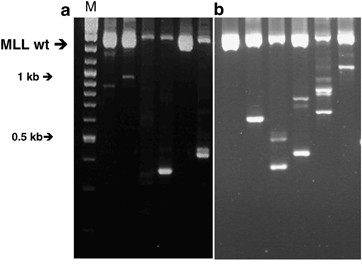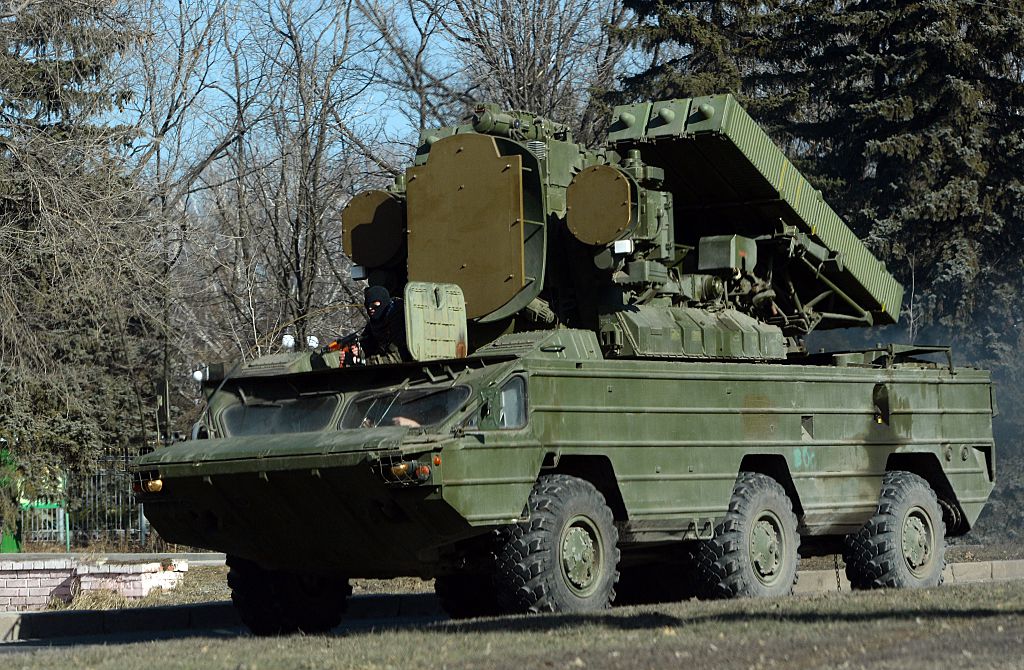
- Select a language for the TTS:
- UK English Female
- UK English Male
- US English Female
- US English Male
- Australian Female
- Australian Male
- Language selected: (auto detect) - EN
Play all audios:
Access through your institution Buy or subscribe The _MLL_ gene (11q23) is frequently involved in genetic aberrations in _de novo_ and therapy-related acute myeloid leukemia (t-AML). In
t-AML, _MLL_ translocations are detectable in up to 10% of all cases.1 Typically, these t-AML are characterized by a short latency period of up to 2 years and are associated with previous
topoisomerase inhibitor treatment.2 The initiating event is thought to be a breakage at the topoisomerase binding site within the breakpoint cluster region (bcr; exons 5–11) of the _MLL_
gene. In more than 70% of _MLL_-positive t-AML, the _MLL_ breakpoint is localized in the telomeric region of the bcr, whereas in _de novo_ AML, it is in the centromeric region.3 MLL
aberrations (deletions, insertions, translocations) can be induced in normal hematopoietic progenitors _in vitro_ by exposure to topoisomerase II inhibitors,4 and by retrospective analysis,
t-AML-associated _MLL_ aberrations have been backtracked up to a few months after topoisomerase II inhibitor therapy in clinical samples.5 As the incidence of t-AML may be up to 10% in
high-dose, myeloablative treatment schedules, it is of certain interest to identify patients who are at an increased risk to attract this complication. Recently, Ng _et al._6 investigated
clinical samples of children who were treated with topoisomerase inhibitors/anthracyclines by Southern blot and panhandle PCR and observed _MLL_ aberrations (_MLL_ breakage and illegitimate
recombination) in 7% (5/71) of the patients. This is a preview of subscription content, access via your institution ACCESS OPTIONS Access through your institution Subscribe to this journal
Receive 12 print issues and online access $259.00 per year only $21.58 per issue Learn more Buy this article * Purchase on SpringerLink * Instant access to full article PDF Buy now Prices
may be subject to local taxes which are calculated during checkout ADDITIONAL ACCESS OPTIONS: * Log in * Learn about institutional subscriptions * Read our FAQs * Contact customer support
REFERENCES * Schoch C, Schnittger S, Klaus M, Kern W, Hiddemann W, Haferlach T . AML with 11q23/MLL abnormalities as defined by the WHO classification: incidence, partner chromosomes, FAB
subtype, age distribution, and prognostic impact in an unselected series of 1897 cytogenetically analyzed AML cases. _Blood_ 2003; 102: 2395–2402. Article CAS Google Scholar *
Pedersen-Bjergaard J . Insights into leukemogenesis from therapy-related leukemia. _N Engl J Med_ 2005; 352: 1591–1594. Article CAS Google Scholar * Super HJ, McCabe NR, Thirman MJ,
Larson RA, Le Beau MM, Pedersen-Bjergaard J _et al_. Rearrangements of the MLL gene in therapy-related acute myeloid leukemia in patients previously treated with agents targeting
DNA–topoisomerase II. _Blood_ 1993; 82: 3705–3711. CAS PubMed Google Scholar * Libura J, Slater DJ, Felix CA, Richardson C . Therapy-related acute myeloid leukemia-like MLL rearrangements
are induced by etoposide in primary human CD34+ cells and remain stable after clonal expansion. _Blood_ 2005; 105: 2124–2131. Article CAS Google Scholar * Megonigal MD, Cheung NK,
Rappaport EF, Nowell PC, Wilson RB, Jones DH _et al_. Detection of leukemia-associated MLL-GAS7 translocation early during chemotherapy with DNA topoisomerase II inhibitors. _Proc Natl Acad
Sci USA_ 2000; 97: 2814–2819. Article CAS Google Scholar * Ng A, Taylor GM, Wynn RF, Eden OB . Effects of topoisomerase 2 inhibitors on the MLL gene in children receiving chemotherapy: a
prospective study. _Leukemia_ 2005; 19: 253–259. Article CAS Google Scholar * Stanulla M, Wang J, Chervinsky DS, Thandla S, Aplan PD . DNA cleavage within the MLL breakpoint cluster
region is a specific event which occurs as part of higher-order chromatin fragmentation during the initial stages of apoptosis. _Mol Cell Biol_ 1997; 17: 4070–4079. Article CAS Google
Scholar * Betti CJ, Villalobos MJ, Jiang Q, Cline E, Diaz MO, Loredo G _et al_. Cleavage of the MLL gene by activators of apoptosis is independent of topoisomerase II activity. _Leukemia_
2005; 19: 2289–2295. Article CAS Google Scholar Download references AUTHOR INFORMATION Author notes * J Basecke and F Griesinger: This work was supported by the German Hector-Stiftung
(grant M18). AUTHORS AND AFFILIATIONS * Department of Hematology and Oncology, University of Goettingen, Goettingen, Germany J Basecke, K Karim, M Podleschny, A Becker, B Glass, L Trumper
& F Griesinger Authors * J Basecke View author publications You can also search for this author inPubMed Google Scholar * K Karim View author publications You can also search for this
author inPubMed Google Scholar * M Podleschny View author publications You can also search for this author inPubMed Google Scholar * A Becker View author publications You can also search for
this author inPubMed Google Scholar * B Glass View author publications You can also search for this author inPubMed Google Scholar * L Trumper View author publications You can also search
for this author inPubMed Google Scholar * F Griesinger View author publications You can also search for this author inPubMed Google Scholar RIGHTS AND PERMISSIONS Reprints and permissions
ABOUT THIS ARTICLE CITE THIS ARTICLE Basecke, J., Karim, K., Podleschny, M. _et al._ MLL rearrangements emerge during spontaneous apoptosis of clinical blood samples. _Leukemia_ 20,
1193–1194 (2006). https://doi.org/10.1038/sj.leu.2404211 Download citation * Published: 06 April 2006 * Issue Date: 01 June 2006 * DOI: https://doi.org/10.1038/sj.leu.2404211 SHARE THIS
ARTICLE Anyone you share the following link with will be able to read this content: Get shareable link Sorry, a shareable link is not currently available for this article. Copy to clipboard
Provided by the Springer Nature SharedIt content-sharing initiative








